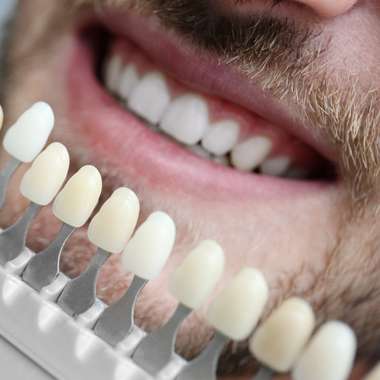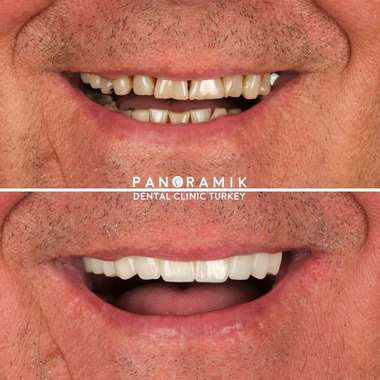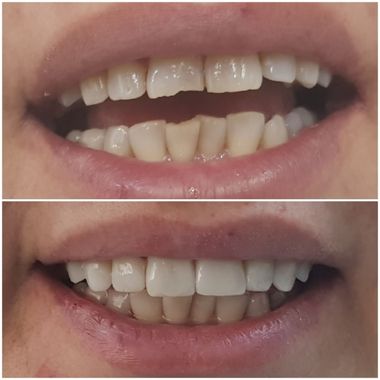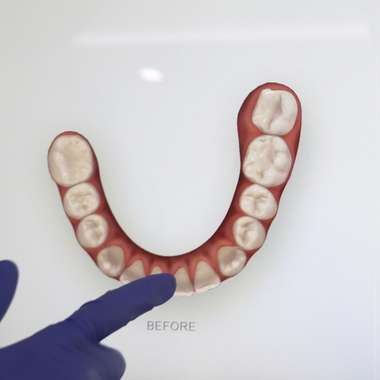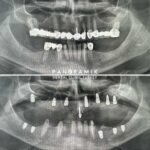
Sinus Lifting
December 2, 2023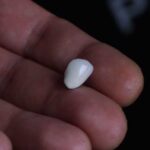
My Veneer Fell Off What Should I Do?
December 7, 2023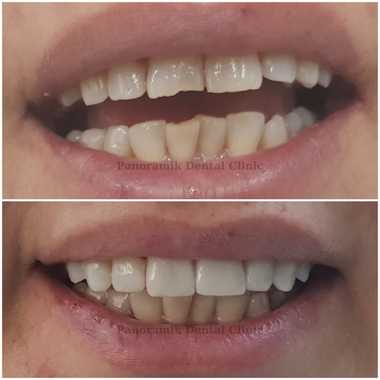
Composite Veneers
Aesthetic veneers applied to the front surface of the teeth, also known as cosmetic dental veneers, are a type of dental veneer made to give a new appearance to teeth that are deformed, cracked, stained and often have gaps between them. It beautifies your smile by shaping the composite.
What Is Composite Veneers?
Composite veneer; It can be made in the colour of the patient's own teeth or in a slightly lighter tone. It is a type of veneer that helps to cover the defects in the teeth with its size and shape. Composite veneers are made of a special composite resin material and are harder and more durable than other composites. The composite resin used in composite veneers is widely used in various dental treatments such as filling and tooth bonding. Composite resin, which has a colour very close to the tooth colour, beautifies your smile in the most natural way.

Image-1: Composite veneer treatment
Composite bonding treatment can be applied to repair cracks and pits on the tooth surface, close tooth gaps or change the shape / colour of the tooth. Composite bonding differs from porcelain veneers and other cosmetic dental treatments in that the tooth bonding process is completely reversible.
Some dental problems that can be treated with composite veneers are listed below.
- Intrinsic stains that typically do not respond to whitening products,
- Small gaps between the teeth,
- Crooked or overlapping teeth,
- Worn or small teeth,
- Uneven or broken teeth,
- Small tooth cracks or chips.
Who Is Dental Veneers Suitable for??
-
Bonding is a suitable treatment procedure for teeth with mild damage to the teeth but without decay.
-
It is especially preferred in patients with a gap between their upper front teeth, that is, diastama, and another reason is that it is more economical.
-
Before the procedure, a digital smile design can be made and the patient can see the shape and aesthetics of the tooth beforehand.
What Are the Types of Composite Veneers?
Composite veneers are divided into 3 types. These 3 different treatment types vary according to the material used and the technique used.
Direct composite veneers
Direct composite bonding is a composite veneering procedure used to correct crooked or rotated teeth. Special composite materials are used for this purpose. As a result of the direct bonding coating process, aesthetics can be achieved in a short time by giving smoothness to the tooth.
Prefabricated composite claddings
Prefabricated composite veneers are fabricated composite veneers as the name suggests. Fabricated veneers are bonded to the patient's tooth by choosing the most suitable one for the patient, but it will not last long.
Indirect composite veneers
Although they are similar to direct composite coatings, they are different from each other. This difference is completely related to the application process and technique, not the material used. The model is prepared by taking measurements from the patient and indirect composite veneers are prepared on the model taken and adhered to the patient in the next session. Indirect composite veneers are more durable than prefabricated ones in terms of durability.
Advantages of Composite Veneers
Composite dental veneers have many advantages over other cosmetic treatments. Some of these advantages are listed below.
- Composite veneers give a natural appearance because the resins used are selected close to your natural tooth colour.
- Unlike porcelain, composite veneers can be applied directly to the teeth on the same day, so the treatment is sometimes completed in one day.
- Composite veneers are much more economical than porcelain veneers.
In addition to all these advantages, the advantages of composite veneers can be briefly summarised as follows;
- Minimally invasive: Although porcelain veneers and dental veneers require significant tooth replacement, dental bonding usually does not require enamel removal.
- Cost effective: Dental bonding is one of the most affordable cosmetic dental procedures available.
- Versatile: Dental bonding can hide many cosmetic imperfections, including chips, cracks, gaps and discolouration.
- Fast and convenient:Other cosmetic procedures, such as veneers and crowns, require multiple appointments. Dental bonding, on the other hand, can be completed in a quick process.
Composite Veneers Treatment Process
-
Control: The oral and dental health of the patient is checked by the specialised dentist.
-
Preparation: Your dentist prepares composite bonding within 3-7 days according to the measurements taken.
-
Application: After the impressions are taken, temporary veneers and crowns are placed, then permanent veneers and crowns are applied within 30-60 minutes.
-
Smile Time: After a total of 5-7 days of treatment, it is time to smile from the inside.
Composite Veneers Cost in Turkey
Composite tooth coating prices are determined after the treatments performed after the first examination. Many factors are effective in determining implant prices. The polyclinic to be applied, the duration of treatment and many other factors affect the cost of composite veneers.
Compared to the cost and quality in the EU, UK and USA, the cost and quality of the service provided in clinics in Turkey and Antalya come to the fore. You will experience an economical, high quality and healthy operation process in Turkey with expert surgeons, customer satisfaction rate and clinics providing quality service. In order to get a clear price information, you need to make an appointment with the dentist and go through the first control.

